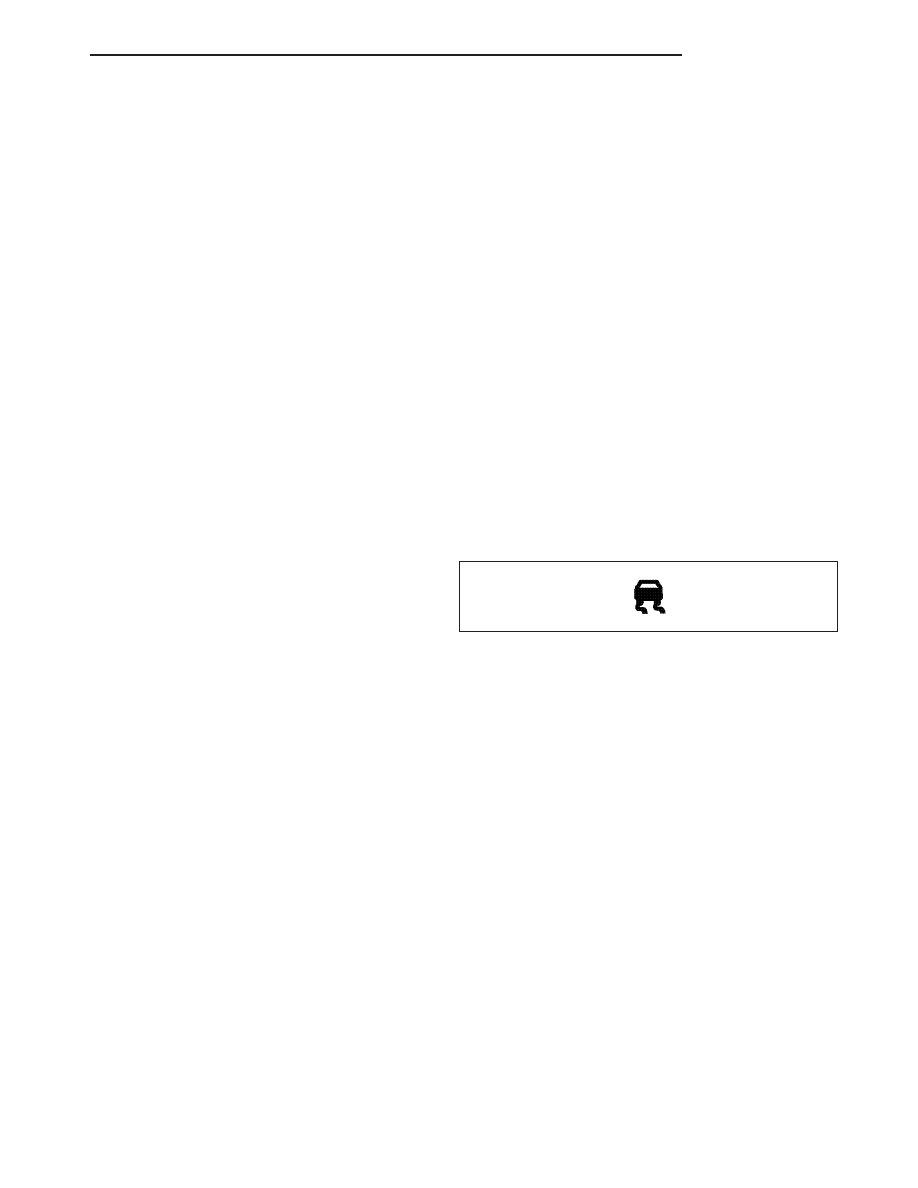Dodge Durango (HB). Manual - part 319

The tow/haul indicator Light Emitting Diode (LED) is completely controlled by the instrument cluster logic circuit, and
that logic will only allow this indicator to operate when the instrument cluster receives a battery current input on the
fused ignition switch output (run-start) circuit. Therefore, the LED will always be off when the ignition switch is in any
position except On or Start. The LED only illuminates when it is provided a path to ground by the instrument cluster
transistor. The instrument cluster will turn on the tow/haul indicator for the following reasons:
•
Tow/Haul Lamp-On Message - Each time the cluster receives a tow/haul lamp-on message from the PCM
indicating that the Off position of the tow/haul switch has been selected, the indicator will be illuminated. The
indicator remains illuminated until the cluster receives a tow/haul lamp-off message from the PCM, or until the
ignition switch is turned to the Off position, whichever occurs first.
•
Actuator Test - Each time the cluster is put through the actuator test, the tow/haul indicator will be turned on,
then off again during the LED portion of the test to confirm the functionality of the LED and the cluster control
circuitry.
The PCM continually monitors the tow/haul switch to determine the proper outputs to the automatic transmission.
The PCM then sends the proper lamp-on and lamp-off messages to the instrument cluster. For further diagnosis of
the tow/haul indicator or the instrument cluster circuitry that controls the LED, (Refer to 8 - ELECTRICAL/INSTRU-
MENT CLUSTER - DIAGNOSIS AND TESTING).
For proper diagnosis of the overdrive control system, the PCM, the CAN data bus, or the electronic message inputs
to the instrument cluster that control the tow/haul indicator, a diagnostic scan tool is required. Refer to the appro-
priate diagnostic information.
TRACTION CONTROL INDICATOR
DESCRIPTION
A traction control indicator is standard equipment on
all instrument clusters. However, on vehicles not
equipped with the optional Traction Control System
(TCS), this indicator is electronically disabled. This
indicator is located in the center of the speedometer,
in the area above and to the right of the speedometer needle hub.
The traction control indicator consists of a stencil-like cutout of the International Control and Display Symbol icon for
“Stability - Anti-Spin” in the opaque layer of the instrument cluster overlay. The dark outer layer of the overlay pre-
vents the indicator from being clearly visible when it is not illuminated. An amber Light Emitting Diode (LED) behind
the cutout in the opaque layer of the overlay causes the icon to appear in amber through the translucent outer layer
of the overlay when the indicator is illuminated from behind by the LED, which is soldered onto the instrument clus-
ter electronic circuit board. The traction control indicator is serviced as a unit with the instrument cluster.
OPERATION
The traction control indicator gives an indication to the vehicle operator when the electronic Traction Control System
(TCS) has been activated. This indicator is controlled by the instrument cluster circuit board based upon cluster
programming and electronic messages received by the cluster from the Controller Antilock Brake (CAB) over the
Controller Area Network (CAN) data bus.
The traction control indicator is completely controlled by the instrument cluster logic circuit, and that logic will only
allow this indicator to operate when the instrument cluster receives a battery current input on the fused ignition
switch output (run-start) circuit. Therefore, the indicator will always be off when the ignition switch is in any position
except On or Start. The indicator only illuminates when it is switched to ground by the instrument cluster circuitry.
The instrument cluster will turn on the traction control indicator for the following reasons:
•
Bulb Test - Each time the ignition switch is turned to the On position the traction control indicator is illuminated
for about four seconds as a bulb test. The entire bulb test is a function of the CAB.
•
Traction Control Lamp-On Message - Each time the cluster receives a traction control lamp-on message
from the CAB indicating that the TCS has been activated, the traction control indicator will be illuminated. The
indicator remains illuminated until the cluster receives a traction control lamp-off message from the CAB, or
until the ignition switch is turned to the Off position, whichever occurs first.
HB
CLUSTER
8J - 73